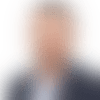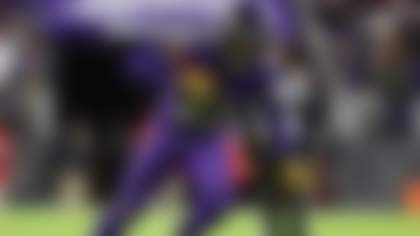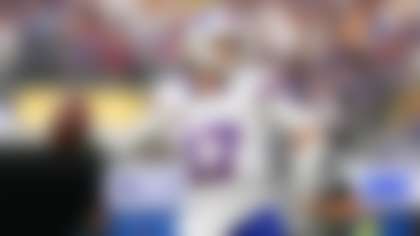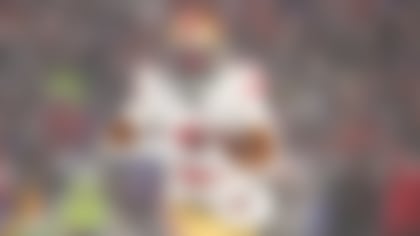Every year once the fantasy football season ends, the fantasy community pivots to looking ahead right away. If you are on Twitter, you have probably already seen many 2022 takes, rankings and a whole lot of dynasty chatter. Its great that the community is invested year-round, but before we dive fully into next season, it is valuable to look back. Perhaps the most important thing to do after the season is to look back and see what we can learn from the past season. This allows us to both learn what we did right and wrong in the previous season, but it also allows to pick up on trends that can help us draft better next season.
Lessons Learned in 2021
Situation/Opportunity > Talent
I am borrowing this one from Marcas Grant, who discussed it on the NFL Fantasy podcast. But this is something that we have seen come up in the past, it's just always easy to convince ourselves that it'll be different this time around. I made this mistake myself this season with Jerry Jeudy. I believed in Jeudy's talent and thought he would take over as the top option in the Broncos' passing game. I thought those two things together would lead to a breakout season. In games Jeudy played this season, he did lead the Broncos with an 18 percent target share. So, we know the former first-round pick is a talented receiver and the thinking that he would take over as their top receiving option was correct, but the situation and opportunity was not one conducive to a breakout season. An 18 percent target share on Denver, a team that threw 56 percent of the time, the 11th-fewest in football, equated to just 5.6 targets per game. Pair that with the fact that his QB for most of the season was Teddy Bridgewater, who averaged eight air yards per attempt, which ranked in the middle of the league. The lack of passing paired with the lack of downfield throwing made a breakout season highly unlikely, as Jeudy would have had to either be super efficient after the catch and in the red zone, or he would have had to be toward the top in the league in target share to live up to the lofty expectations placed upon him. This was a miss on my part for believing Jeudy's talent would lead to a breakout season. While part of the equation was there, the situation he was in was hindering a breakout. Now, if the Broncos upgrade their QB this season, then we can buy back in on Jeudy, whose talent we already believe in.
D.J. Moore has been the face of this lesson for the past couple of seasons. Moore is a superbly talented receiver who every year people predict will break out and take the step to be a fantasy WR1. And yet, every year he finishes outside the top-15 fantasy WRs. He has finished outside the top 25 in fantasy PPG the past two seasons. It is not about Moore and his talent; it is more that he is on an offense built around the running back and has played with below-average QBs. Not to pick on these two players – there are many examples of this each year. Javonte Williams is another example, who we thought would break out, but was limited due to Melvin Gordon's presence. Identifying talent is only part of the battle and in redraft, you can argue that situation and opportunity matters even more than talent. You can take a bet on talent in dynasty, as it tends to win out, but in just one season, it can make a player highly overrated. It's always great to believe in a player talent, but understand that it is just a piece of the puzzle. You must dissect the situation around the player, as well. When both things seem favorable, a breakout is likely on the horizon.
Unknown Doesn't Always Equal Upside
Something I have started preaching in recent years is to target upside in drafts. It is a strategy that makes sense, as you have a better chance of hitting on breakout players if you take a lot of upside shots. And if they don't work out, you can keep taking upside shots off the waiver wire. But you can also over do it or expect too much upside. One example from that, was the Jacksonville Jaguars offense in 2021. This was a team that had a new big-name head coach, with the prospect of a generation at QB and some good pieces around him. It led me, and many others, to think there was upside here with Trevor Lawrence, Marvin Jones and Laviska Shenault Jr.. And we all know how that ends. There was no shortage of high upside players that just did not pan out this season. So, is the lesson to stop chasing upside? No, not at all. Fantasy leagues are still won off breakout players, so you should be taking those shots. The lesson here is an unknown commodity is not always better than a proven one. The hype will often go to the unknown, as there is no content to be made telling you that someone like Tom Brady is a good pick, but do not get sucked in to "what could be" when the fantasy hype machine gets going. That always leads to having to pay a premium price to get a player and often so, you are leaving better picks on the board. Have a balance of trusted players and upside on your roster.
Target Good Offenses
This may sound obvious, but it is not. Just look at the two "upside" players I discussed in the last two lessons – Jeudy and Lawrence. We saw those two fail to live up to the hype and a large reason why is the offense they play in. The thing you tend to hear when it comes to players on offenses that will be more productive is that there are "too many mouths to feed." We hear that every year. But just look at the top-10 scoring teams from 2021: Cowboys, Bucs, Bills, Chiefs, Chargers, Patriots, Rams, Bengals, Colts and Packers. All but the Patriots were loaded with key fantasy assets. The way to think of it like this: The more yards and points a player's offense put up, the better chance your fantasy player has of putting up a good game. Players on these high-powered offenses are also less reliant on needing to see a large share of their teams' productions. Teams that struggle offensively may score one or two touchdowns a week, while putting up a lot less yards. On these great offenses they both score more touchdowns and pick up more yards – so 15 percent of a team's production could be more than 20 percent on a bad offense. It might sound simple, but targeted players on high-scoring offenses is a good strategy – despite the fear of too many mouths to feed.
On the flip side, it is easy to buy the idea that a player with limited options will see such a large amount of volume that it'll lead to a big fantasy season. And that is the case, if the player gets the projected volume. Examples that worked out this past season were Najee Harris and Diontae Johnson on the Steelers, and Brandin Cooks was another hit. But typically, on bad teams there is usually just one or two consistent fantasy options, if even that many. And the chances of them busting out each week is higher due to the offense around them.
These were the three biggest lessons I took away from the 2021 season, but I also took to Twitter to see what other lessons people learned this season. Here are some of the best ones:
This is a lesson I took away from this season as well. My approach last season was to attack RBs early – even if that meant forcing it at times. There were numerous occasions where I was on the clock and my highest-ranked running back was someone like Clyde Edwards-Helaire, David Montgomery or Chris Carson were the best on the board in the second or third round. There were receivers that I felt better about, but my philosophy was that receiver was just the better and deeper position, so I would force the RB. That was a mistake. Yes, the receiver position is deeper than RB. But, after the WR1s, most receivers are so inconsistent week to week, meaning you could be playing a weekly guessing game when setting your lineup. Also, you are going to pick wrong at times and that will be infuriating. Not only that, but there are always going to be RBs popping up on the waiver wire. While I am not completely abandoning my heavy RB approach, I will be a lot more selective after the first round.
This is good advice, at least for the TE position. I think after the emphasis to take an early TE and then Travis Kelce having a down year for his standards, Darren Waller having a lost season, George Kittle missing a bunch of time and Kyle Pitts having a "disappointing" season many may shy away from taking a TE early. The elite options at this position still provide a big edge, even with it seeming like there is depth at tight end. As for QBs, I continue to think the secondary tier is where you should live. Do not pay up for the first couple of QBs off the board, because they tend to go two or three rounds earlier than the second tier. But you can still get a very good and consistent quarterback in the sixth round or so – that is the sweet spot for drafting QBs. Also, its never a bad idea to draft a second QB, but they need to bring upside, not safety.
My advice with handcuffs is do not draft them, grab them off the waiver wire. You hear a lot that you do not want to roster your handcuff – but in recent years with injuries and COVID, handcuffs have seemingly been more important. I still would not draft one in the single-digit rounds, but if your star running back has a clear-cut backup that will get a lot of work, it's not a bad idea to use a late-round pick or waiver-wire pickup to stash on the bench. Especially the later in the season we get with less and less bye weeks.
This is a tough one, as production fluctuate week to week so much in the NFL. Sometimes being patient pays off – despite the many people who roasted me for writing about Amon-Ra St. Brown pretty much weekly in the waiver wire column. But as we have seen many times, it can be sort of a guessing game with the fringier players.
This is also a good rule of thumb. But, if you are waiting on QB, I would say to take at least one proven option. In two separate superflex leagues, I went purely with upside QBs – one going Lawrence and Justin Fields and in the other going Tua Tagovailoa, Lawrence and Sam Darnold. It was a rough year in those leagues, despite the rest of my roster being pretty loaded. If you wait, I will say grab one proven option (think Ryan Tannehill, Kirk Cousins coming into last year) and an upside player. And be sure to take a backup QB or two, that also bring upside.
I didn't include this solely because I write the waiver-wire column, I swear! But the truth is in season management is just as important, if not more so, than drafting. Everyone loves to hyper focus on the early rounds of their draft, but everything after that is just as important if the goal is winning a championship.
This is another great piece of advice, from George Costanza's dad no less. The RB dead zone is from rounds three or four to rounds seven or eight. Pretty much, it is the area where you are drafting less talented RBs or those in murky situations. Often, the idea is that yeah, they aren't as good as the earlier RBs, but they will get a starters workload. Just ask Mike Davis, Miles Sanders, Myles Gaskin, Kareem Hunt, and many other drafters how it worked out. Especially, given the many great receivers who went in those rounds – including Deebo Samuel and Cooper Kupp.
Man, there is something always tempting about waiting one more round to grab that player you really want – but here's the thing, many times, that player will not make it back to you. If you like that player, there is probably someone else in your league that does, too. Do not hesitate to get your guys.
Stacks have been all the rage the past couple of summers, and I think it is a best ball strategy carrying its way over into redraft. In best ball leagues, where you can not make any moves throughout the season and your optimal lineup is set each week, the only goal is to score the most points. But since you cannot make moves, having a QB and pass catcher stack makes sense, since it allowed you to rack up points in a quick way. But often time to complete a stack you must pull a player up the board a bit to ensure you have him. That bled over into redraft, but the option there is to simply draft the best players available. It doesn't hurt to have a stack in a seasonal league, but it is not worth forcing.
The last part is why I included this tweet. Look, building depth is great, but the part that focuses on snap counts is what really matters to me. It's something that I have preached for a while, but every year it gets questioned. It's not just snap counts, it's touches, targets, red zone usage, etc. For me, usage matters even more than production. Look, football is a very random game, and we are never going to be able to predict production each week. It's why we love football. But, if a player is getting consistent usage, it is much more predictive for future production than a random big game.
This is good advice from Jon (who is a good follow if you don't follow him already). Each year there are a select few handcuffs that I will definitely target in the double-digit rounds, regardless if I have that starter or not. They are the elite backups that will see the bulk of work and become a weekly near must start option if the starter went down.
Trade always is more like it. But this can go both ways. In one league, I traded Deebo Samuel for Stefon Diggs early in the season and thought I was a genius – and so did all of Twitter. The other manager had the last laugh.
Yes, it is. That goes for all things in life really. But luck is also typically explained when something unpredictable happens – but football is a big play sport, which makes it have a higher amount of "randomness" than other sports. It can be frustrating when it happens against your fantasy team – but its also why we love this game so much!
This is just a good rule of thumb in general.
Now take these lessons and implement them into your 2022 strategy!












